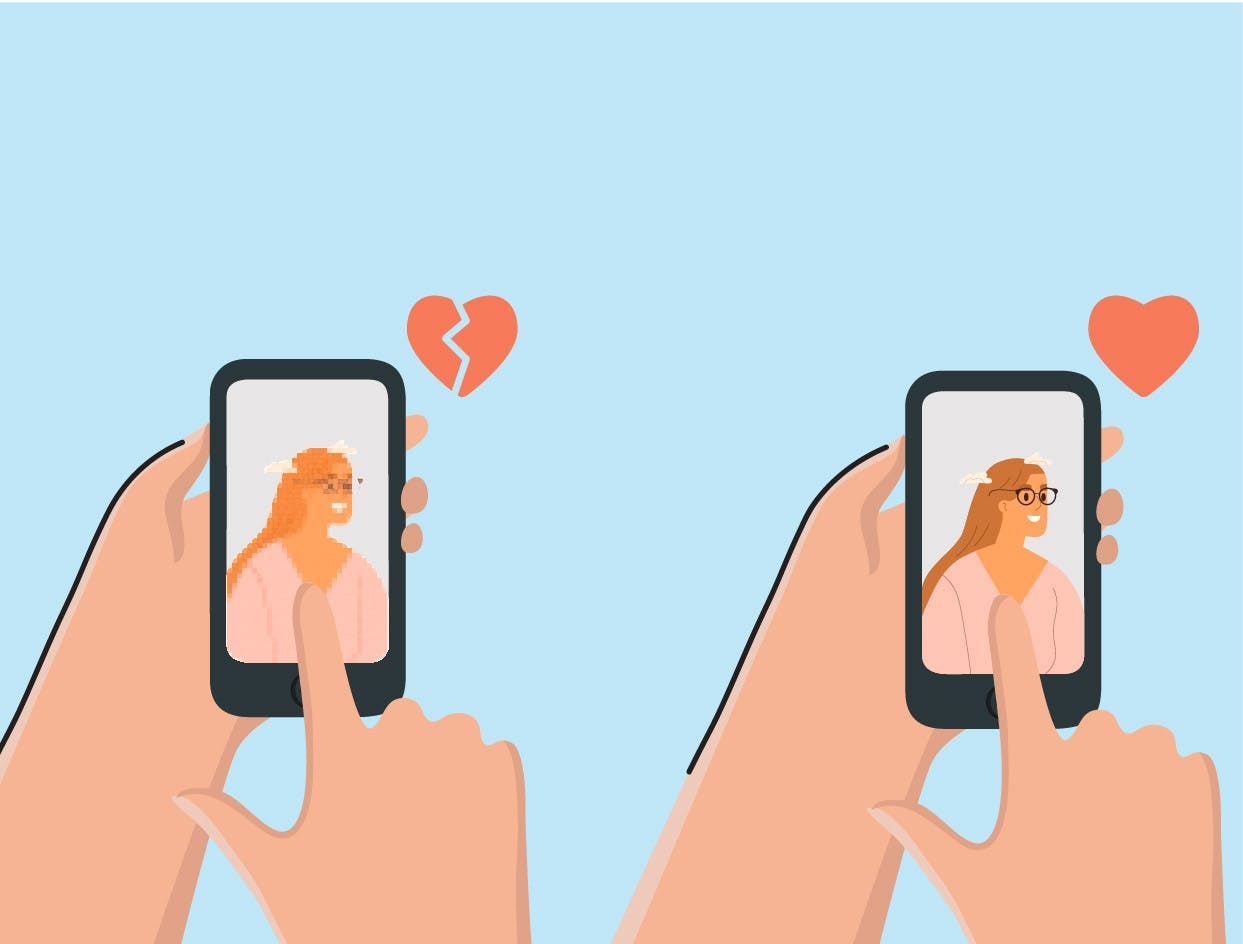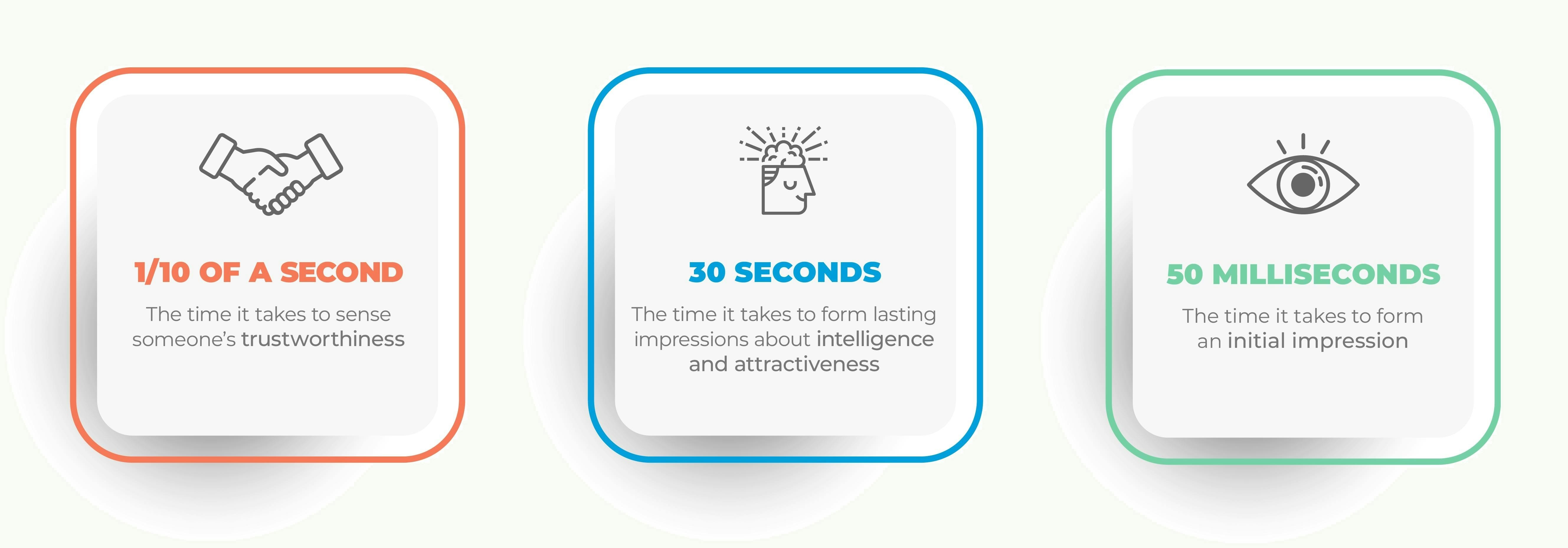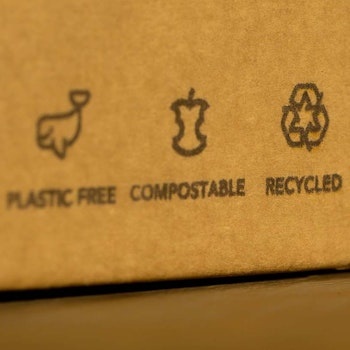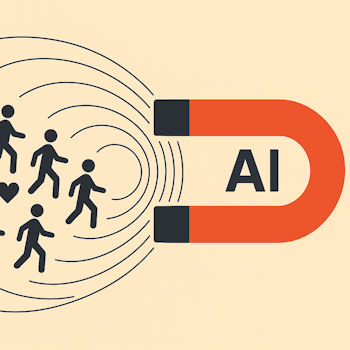
First Impressions: How to Get Consumers to Swipe Right on your Brand
Published on: May 17 2023
It's hard to believe that in 1995 Match.com was launched as the world’s first online dating website. By 1996 there were 16 sites dedicated to internet dating and this industry has continued to thrive over the past several decades with over 8,000 providers now expected to reach 441 million active users by the end of 2023, generating approximately $8.7 billion in revenue globally (1).
I often think about how dating sites are somewhat similar to what marketers are trying to achieve with product launches and / or advertising in general. It seems like dating apps and branded content are more like personal introductions aimed at mimicking the earliest interaction you have in a real-life encounter - a first look. And the ultimate goal is to get a positive reaction that encourages a follow-up interaction.
Increasingly, dating sites are leaning towards more science based approaches, promising to provide longer-lasting matches based on the scientific ingredients of attraction and love. For instance, sites like Tinder, Match.com or Badoo, owe their viral success to deeply rooted cognitive biases that cause people to subconsciously connote inherent quality simply from an initial presentation. Similarly, brands like Apple, Coca Cola, and Google have used visual marketing strategies based on almost instant conclusions to communicate their commitment to constant innovation and distinctiveness.
I often think about how dating sites are somewhat similar to what marketers are trying to achieve with product launches and / or advertising in general. It seems like dating apps and branded content are more like personal introductions aimed at mimicking the earliest interaction you have in a real-life encounter - a first look. And the ultimate goal is to get a positive reaction that encourages a follow-up interaction.
Increasingly, dating sites are leaning towards more science based approaches, promising to provide longer-lasting matches based on the scientific ingredients of attraction and love. For instance, sites like Tinder, Match.com or Badoo, owe their viral success to deeply rooted cognitive biases that cause people to subconsciously connote inherent quality simply from an initial presentation. Similarly, brands like Apple, Coca Cola, and Google have used visual marketing strategies based on almost instant conclusions to communicate their commitment to constant innovation and distinctiveness.
Several social psychology studies suggest that the formation of first impressions is an automatic, extremely rapid process based on whatever evaluative information is available (2). Two basic evaluative dimensions are warmth (traits related to perceived intent) and competence (traits related to perceived ability) that drive impression formation. Additionally, while the face is a central source of social information (for instance, studies on judging trustworthiness in unfamiliar faces found that these preconscious judgements are made after as little as 33-50 milliseconds), face-based attributions may go beyond perceptions of physical attractiveness and instead depend on facial typicality and youthfulness, ultimately biasing the assessment of subsequent information presented - like a profile headline or “about me” section. Therefore, information depicted in descriptions are often only useful when serving weak first impressions.
Similarly for brand owners, achieving consensus on what is attractive is often complicated because aesthetic appreciation involves a shared series of cognitive and evaluation processes that are independent of the aesthetic value of an object. For example, a well-designed product may have aesthetic value, whereas an ordinary product may not; however, both can be appreciated through the same cognitive and evaluative processes.
One way aesthetic appreciation can be achieved is by reducing the cognitive load in the user experience. Cognitive overload happens when your working memory receives more information than it can comfortably handle, ultimately leading to frustration and weakened decision making. Overall, any time that a consumer has to pause while browsing content, even for an instant, their working memory is weighed down, therefore impacting their overall experience. Eliminating clutter, simplifying layouts with structural symmetry, and diversifying content for balance can create harmony and improved comprehension.
The ability to rapidly evaluate intentions and capabilities is crucial to survival and evolution in our every-day interactions. Another way in which we quickly extract useful information is through a process called thin slicing - a person’s ability to extract information based on narrow windows of experience and related events (3). Thin slicing has shown that when exposed to brief patterns of behavioral expressions or stimuli, observers are capable of making quite accurate judgments about a wide range of individual characteristics and personal information, such as socioeconomic status, achievements, work skills, trustworthiness, marital discord, deception detection, well-being, and likelihood of being an appropriate teammate, among others. Research on thin-slicing has tended to focus on personal/behavioral impressions, however there is evidence that thin-slice judgments have implications for online content and brand perception as well.
Similarly for brand owners, achieving consensus on what is attractive is often complicated because aesthetic appreciation involves a shared series of cognitive and evaluation processes that are independent of the aesthetic value of an object. For example, a well-designed product may have aesthetic value, whereas an ordinary product may not; however, both can be appreciated through the same cognitive and evaluative processes.
One way aesthetic appreciation can be achieved is by reducing the cognitive load in the user experience. Cognitive overload happens when your working memory receives more information than it can comfortably handle, ultimately leading to frustration and weakened decision making. Overall, any time that a consumer has to pause while browsing content, even for an instant, their working memory is weighed down, therefore impacting their overall experience. Eliminating clutter, simplifying layouts with structural symmetry, and diversifying content for balance can create harmony and improved comprehension.
The ability to rapidly evaluate intentions and capabilities is crucial to survival and evolution in our every-day interactions. Another way in which we quickly extract useful information is through a process called thin slicing - a person’s ability to extract information based on narrow windows of experience and related events (3). Thin slicing has shown that when exposed to brief patterns of behavioral expressions or stimuli, observers are capable of making quite accurate judgments about a wide range of individual characteristics and personal information, such as socioeconomic status, achievements, work skills, trustworthiness, marital discord, deception detection, well-being, and likelihood of being an appropriate teammate, among others. Research on thin-slicing has tended to focus on personal/behavioral impressions, however there is evidence that thin-slice judgments have implications for online content and brand perception as well.
“Thin slices force the observer to focus on nonverbal cues without the influence of the verbal message or information from previous interactions or the broader context of the situation.” (4) The ability to use thin slices to form judgments may be particularly important in affecting first / continued impressions of brands because most interactions with consumers are not verbal. Ultimately, thin-slice judgments of brands may be even more accurate than those of people because brands are less complex and easier to categorize, making automatic perceptions particularly reliable.
These behaviors are an effort to simplify the complex world around us, transcending our evolution and serving as a reminder that at a primordial level, people do judge on appearances and expressions, particularly people you are selling to. The very definition of what people perceive as high quality or good value in the digital domain is changing rapidly and the threshold of aesthetic bias has shifted upwards, therefore brands and marketers will have to keep pace.
References
(1) https://www.statista.com/chart/24165/online-dating-penetration-rate-revenue-selected-countries/
(2) Bar, M., Neta, M. and Linz, H., 2006. Very first impressions. Emotion, 6(2), p.269.
(3) Lykourentzou, I., Kraut, R.E. and Dow, S.P., 2017, February. Team dating leads to better online ad hoc collaborations. In Proceedings of the 2017 ACM Conference on Computer Supported Cooperative Work and Social Computing (pp. 2330-2343).
(4) Ambady, N., Krabbenhoft, M.A. and Hogan, D., 2006. The 30‐sec sale: Using thin‐slice judgments to evaluate sales effectiveness. Journal of Consumer Psychology, 16(1), pp.4-13.
These behaviors are an effort to simplify the complex world around us, transcending our evolution and serving as a reminder that at a primordial level, people do judge on appearances and expressions, particularly people you are selling to. The very definition of what people perceive as high quality or good value in the digital domain is changing rapidly and the threshold of aesthetic bias has shifted upwards, therefore brands and marketers will have to keep pace.
References
(1) https://www.statista.com/chart/24165/online-dating-penetration-rate-revenue-selected-countries/
(2) Bar, M., Neta, M. and Linz, H., 2006. Very first impressions. Emotion, 6(2), p.269.
(3) Lykourentzou, I., Kraut, R.E. and Dow, S.P., 2017, February. Team dating leads to better online ad hoc collaborations. In Proceedings of the 2017 ACM Conference on Computer Supported Cooperative Work and Social Computing (pp. 2330-2343).
(4) Ambady, N., Krabbenhoft, M.A. and Hogan, D., 2006. The 30‐sec sale: Using thin‐slice judgments to evaluate sales effectiveness. Journal of Consumer Psychology, 16(1), pp.4-13.







